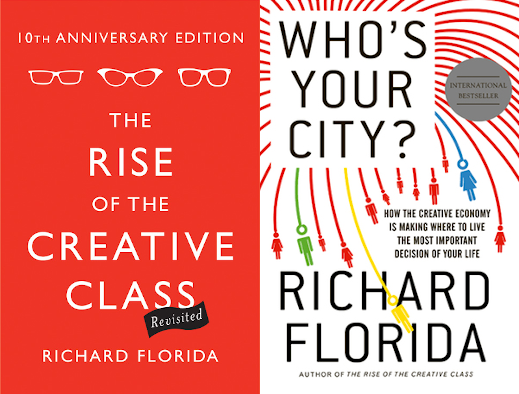
Charles R. Goulding and Alyssa Schneider review ideas presented in Richard Florida’s books that can be applied to 3D printing thinking.
For decades, the author, University of Toronto professor, and urban theorist Richard Florida has done extensive research on the desire for creative people to work in specific cities. In his best-selling books The Rise of the Creative Class and Who’s Your City?, Florida described creative people who drive economic development to include architects, engineers, artists, designers, managers, lawyers, etc.
Florida’s overall conclusion was essentially that creatives desired to live and work with other creatives. Florida’s geographic findings are used by those who want to sell to the creative class to create marketing and business support programs. Some of the top-tier cites in his original work included New York City (NYC) and San Francisco.
Currently, NYC and San Francisco are experiencing substantial outward migration. To keep connected to their customer base the 3D printing industry should monitor the new destinations of the creative class.
For NYC the new designations are the NYC suburbs and pre-COVID-19 Tampa and Orlando. For San Francisco, the new designations are Los Angeles and Austin. Nationally Nashville, Tennessee is a popular destination. Often multi-state 3D printer sellers have decentralized sales, customer service, and technical support staff so it is important where possible to locate or relocate those individuals to the new creative class designation areas.
The Research and Development Tax Credit
Enacted in 1981, the now permanent Federal Research and Development (R&D) Tax Credit allows a credit that typically ranges from 4%-7% of eligible spending for new and improved products and processes. Qualified research must meet the following four criteria:
- Must be technological in nature
- Must be a component of the taxpayer’s business
- Must represent R&D in the experimental sense and generally includes all such costs related to the development or improvement of a product or process
- Must eliminate uncertainty through a process of experimentation that considers one or more alternatives
Eligible costs include US employee wages, cost of supplies consumed in the R&D process, cost of pre-production testing, US contract research expenses, and certain costs associated with developing a patent.
On December 18, 2015, President Obama signed the PATH Act, making the R&D Tax Credit permanent. Beginning in 2016, the R&D credit can be used to offset Alternative Minimum tax for companies with revenue below $50MM and, startup businesses can obtain up to $250,000 per year in payroll tax cash rebates.
Conclusion
Professor Florida’s theories on creative people’s habits have always been thought-provoking. He is active on social media and during these times the 3D printing community may benefit from his keen insight and observations.
